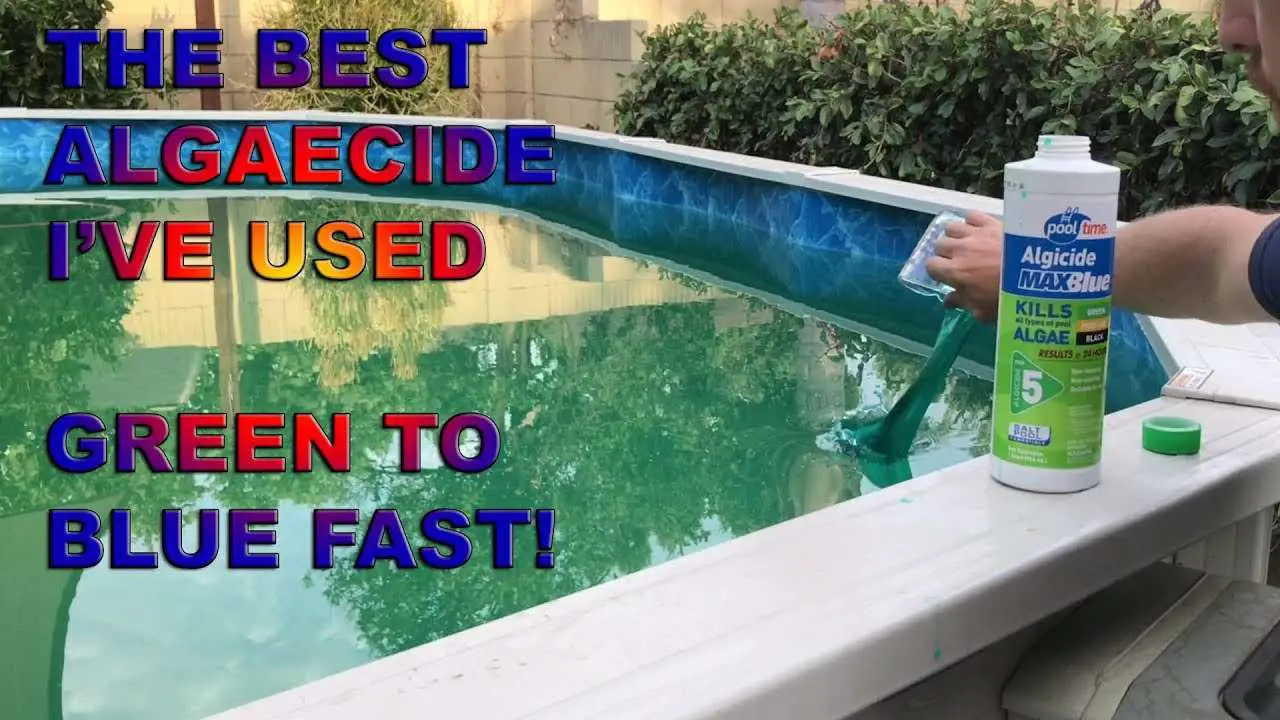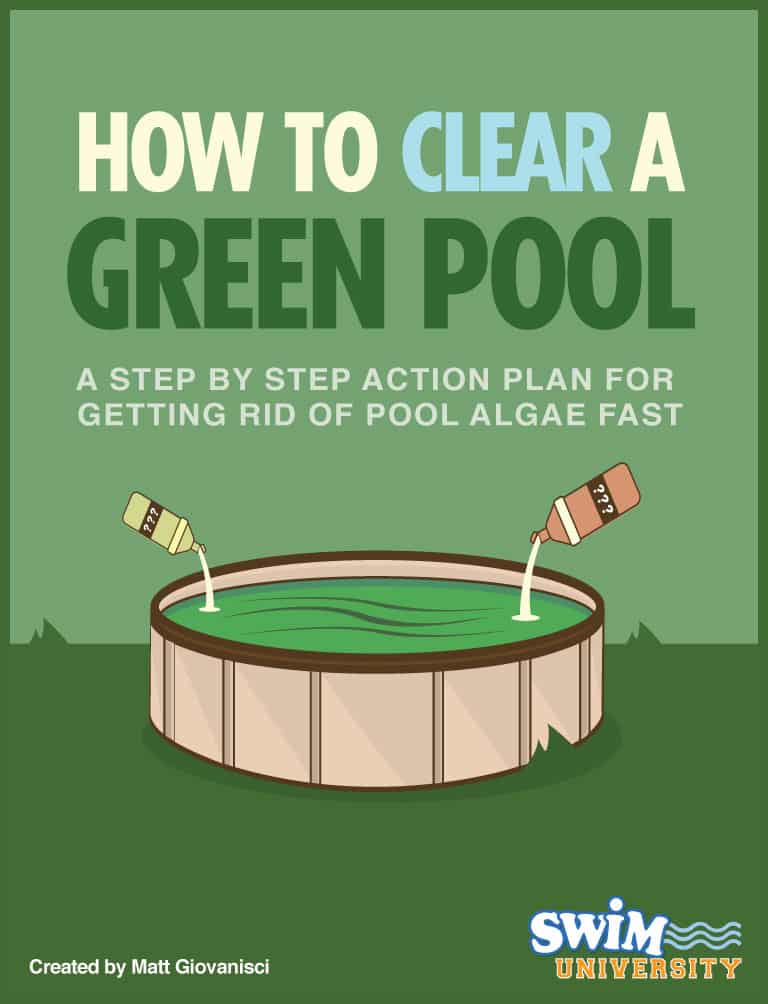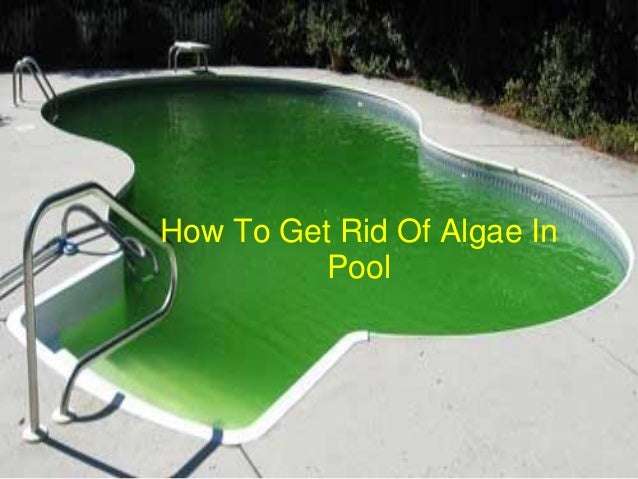Why Do You Have Algae In Your Saltwater Pool
You might not realize this, but algae are constantly getting into your saltwater pool through various means.
Depending on the type of algae, it can latch onto your swimwear, your floats or pool toys, your pool equipment, or algae spores enter your pool through rainwater or a random gust of wind.
This is happening all the time. Youre only actually aware of algae in your pool when the sanitizer in your water fails to contain and kill it, allowing a mild case of algae to grow out of control.
The real question is, why did your sanitizer fail?
The first thing to understand is that while your saltwater generator produces a constant flow of chlorine, the base chlorine level in a saltwater pool is lower than in a traditional chlorine pool.
This is what makes saltwater pools less harsh on the skin and eyes, but it also leaves them slightly more vulnerable to algae blooms.
Under normal conditions, the chlorine level in your saltwater pool is still high enough to deal with the threat of algae, which is why you dont have an algae problem all year round.
But conditions can and will change, and it only takes the briefest of changes for pool algae to gain the upper hand.
For example:
Regardless of the reason, having algae doesnt necessarily make you a bad pool owner, it just means your water conditions shifted ever so slightly in favor of algae. It happens to the best of us.
How To Get Rid Of Pool Algae
Where theres water, theres life. While this may be a rallying cry for astronomers in search of ET, its a far more troubling prospect for pool owners.
One of the most common pool problems is the flowering of new life in the form of algal blooms. Algae is a catchall term for a wide variety of single-celled microorganisms there are thousands of different kinds, but a few can be commonly found in swimming pools.
Pool algae tend to come in a few common types, distinguishable by color green, pink, yellow, or black. If your pool water is anything other than clear, then it may be time to call in a professional.
We Do Your Homework So You Dont Have To.
What Is An Algaecide And How Is It Used In The Pool
Algaecides are used to fight algae in swimming pools.
The algaecides sold in the US are ammonium compounds available in various qualities.
- Not foaming
- Slightly foaming
- Strong foaming
Algaecides are available either as a liquid or processed as blocks in your local pool stores or online.
A well-known and frequently used algaecide is copper sulfate, based on heavy metals.
Heavy metals are harmful to health, but with the correct dosage of algaecide, bathers will not experience any allergic reactions or other side effects you will find out how to do this below in the text.
Nevertheless, it would be best to be careful not to swallow too much of the pool water.
Under certain circumstances, using copper sulfate in a plastic pool can cause stains in the swimming pool.
The truth about the algaecide in the pool is: You dont need the algaecide for pool maintenance.
Forums recommend the algaecide as an algae destroyer by an infestation with green algae.
Many beginners resort to the algaecide directly without informing themselves In my instructions against green pool water, I explain how you can clean your water without algaecides.
Of course, the algaecide has some effect against algae, but it should not be used as an active agent against algae.
The algaecide is much more sensible to use as an algae repellent.
Tip: Read on in the article to learn more about alternatives to algaecides and preventive measures against algae.
Don’t Miss: Chlorine Pool Calculator
Why Is Mustard Algae Bad For Your Pool
Mustard algae stick to the walls and the sides of your pool. When it sits for too long, it can create stains, especially if your pool has a vinyl liner. In addition to potential stains, mustard algae will cause more bacteria growth in your pool if left alone. The more bacteria in the pool, the bigger a problem you have on your hand.
Mustard algae is not all that harmful or dangerous to humans, but when bacteria start to grow because of the algae, it can then be dangerous.
Read Also: Diy Inground Pools
How To Use Flocculant To Quickly Remove Algae

Flocculant, or floc, is a chemical used to clear up algae or cloudy pool water. Flocculant works very quickly and clears cloudy pool water by clumping small particles together and dropping them to the bottom of the pool to be vacuumed out. For getting rid of little green algae quickly, I recommend using floc with the following steps.
Also Check: Liquid Pool Heater
Shock Your Swimming Pool
Adding shock to your pool super-chlorinates your water. And this extra dose of sanitizer will kill algae growth. The more serious your pool algae problem, the more shock youll need.
We recommend using calcium hypochlorite shock, or cal-hypo shock, as an effective algae treatment. Follow the package instructions to determine the dose for your pool size, then multiply that by two, three, or four depending on which type of algae youve got.
- Green Algae: Double dose of shock
- Yellow or Dark Green Algae: Triple dose of shock
- Black Algae: Quadruple dose of shock
Here is the type of cal-hypo shock we recommend:
Remember to shock your pool at dusk or night. If you shock during the day, the sun will eat up most of the chlorine before it has a chance to kill the algae. And put your cleaning equipment, like your vacuum head or pool brush, in the shallow end of your pool so your tools will get sanitized while the shock is in the water.
Be sure to run your filter for eight hours or overnight to circulate the shock. If theres still a significant amount of algae in your pool, repeat the brushing and shocking process again.
If you need help shocking your pool, check out our guide on how to use pool shock.
How Do I Get Rid Of Algae In My Pool Without A Vacuum
You have to apply borax to the algae-infested surfaces and scrub them really hard with the brush. You can collect the algae with a net or scoop it up. The algae will not grow if the borax is not killed. It is easier to remove the algae from the aquarium. If you dont have a brush or net, you will need to use your hands.
You can use a toothbrush, but it will not be as effective as using a cloth or sponge. If you are using the sponge, make sure it is clean and dry before you use it. It is also a good idea to clean your sponge before using it to prevent it from drying out.
You May Also Like
Read Also: Best Cyanuric Acid Reducer
Pool Shock Against Algae
No other agent is as effective in combating algae as chlorine.
To be precise, we are talking about shock chlorination .
I have to mention that a pool shock is not always necessary.
In the case of partial growth of green algae or mustard algae, it is sufficient to scrub the pool, let the filter run for 24 hours and use the algaecide in the swimming pool to inhibit the algae from growing again.
However, if you have black algae in your pool, you cannot rely on the algaecide alone. In this case, perform a pool shock and apply the algaecide.
How To Quickly Get Rid Of Algae In Your Swimming Pool
Algae is not a fun thing to have in your pool. It is certainly very irritating if all you want to do is relax in the water, but to do so, you have to clean it first. You dont have to hire a professional to clean out the algae since its a straightforward process, you can do it yourself with little issue.
It may seem complicated at first, but once you get the hang of it, algae wont stand a chance in your pool. Remember to keep up with cleaning your pool and check it as often as you can. Cleanliness is the only way to keep away bacteria.
Read Also: Carnivale Pool Venetian
How Do I Get Rid Of Algae In My Pool Naturally
You guessed it youll need the good ole scrub brush and some borax. In the same way that baking soda can be a spot treatment for black algae, household borax does the same for blue and green algae. Simply use the borax to scrub away algae thats sticking to your pool walls, then use the brush to dislodge it.
Can You Use Algaecide To Get Rid Of Pool Algae
No, we do not recommend using algaecide to get rid of a large algae problem. But algaecide is effective for early-stage algae growth, small amounts of algae, or as a preventive measure. For more information on using algaecide, check out our article The Truth About Using Pool Algaecide.
After vacuuming, brushing and shocking your pool, you can use an algaecide to help kill any remaining algae. Wait for your chlorine levels to fall below 5 ppm after shocking your pool. Then add a dose of algaecide. Brush your pool to loosen any last bits of algae you cant see. The algaecide will help kill remaining algae particles before theyre filtered out.
Heres the algaecide we recommend. Add this as a final step in the algae clean up process or as a preventative measure in your pool:
Heres how to use pool flocculant to get rid of early-stage algae:
Read Also: How To Vacuum My Above Ground Pool
Whats It Doing In My Pool
If youre recently taken a dip in the ocean, a lake, or other natural body of water and then jumped into your pool, youre at risk of introducing black algae to it. From chic bathing suits to swim-happy pets, black algae has a whole host of vehicles it can use to hitch a ride to your backyard swimming hole. Its way easier to transfer from a pond or lake than you probably ever realized.
A black algae infestation can happen if someone uses a pool float in a lake or the ocean without spraying it off thoroughly with a garden hose. The aquatic pest can even get into your pool if airborne spores of the species happen to be wafting your way .
How Do I Stop Algae From Coming Back

Remember the old saying “An ounce of prevention is better than a pound of cure?” This is so applicable to your pool. Keep your pool from getting sick and you’ll never have to worry about the extra expenses trying to revive it.
Keep your pool in top shape and algae-less by doing some periodic maintenance, it may be a bit time-consuming, but it is worth it in the long run.
Don’t have much time? Don’t worry, it doesn’t take too long if you follow our tips and tricks on how to test and fix your pool water.
And probably one of the best ways to ensure that your pool water stays algae-free is to ensure that yourpool filters are in top condition all the time!
Also Check: Fishers Ymca Swim Lessons
Tips To Preventing And Stopping Pool Algae From Coming Back
The first step should be maintaining the water balance, especially regarding chlorine levels. Good chlorine levels can stop all algae from growing in your pool, so its the primary parameter to look at.
Another good preventing step can be using a good phosphate remover if you have problems with algae continuing to re-grow after cleaning the pool. The same can go for algaecide, which can help prevent the worst cases of algae from reappearing.
How To Get Algae Off The Bottom Of Your Pool Using A Pool Vacuum
A skimmer is an excellent tool for cleaning floating or suspended debris out of your pool. However, pool vacuuming is usually required to remove contaminants on the sides or bottom of the pool.
Vacuuming algae out of your pool works best after using a flocculant, so the particles bind together and fall to the bottom in large clumps.
Most pool vacuums connect to the pool filter to run on the normal setting. For light to moderate cleaning, this is fine.
However, when cleaning up significant algae blooms, it may be necessary to set your pool vacuum to waste or drain mode. The contaminated water gets drained externally and bypasses the pool filter.
Read Also: Best Pool Heater/chiller Combo
Keep Your Filter Clean
Maintaining the filter by cleaning it regularly is important not just for algae prevention, but for general pool maintenance as well.
The filter is usually working an average of 8 hours every day, so make sure youre cleaning it out before it becomes ineffective and problematic.
Depending on your filter type, you can backwash a sand or DE filter, whereas a cartridge filter will have to be manually cleaned.
How To Get Rid Of Algae In Pool Naturally Using Uv Light Treatment
Ultra-Violet light has long been used as an effective way to kill algae in garden and Koi ponds. Now, these systems are being made to work in swimming pools too. All this takes is making the size of the UV bulbs a little bigger so they can sanitize the increased volume of water in a swimming pool. They are an algae killing system that is proving to be very effective at controlling algae growth in backyard pools.
How do UV light systems help keep algae from growing in a swimming pool? They actually mutate the DNA of the algae when it passes over the light in the sanitization chamber of the device. When this happens, it prevents and inhibits the growth of the algae particles.
Recommended Reading: Jones Beach West Bathhouse Pool
Test And Balance Your Pool Water
When you have too little sanitizer or your water chemistry is otherwise out of whack, algae can thrive. Time for some pool water testing! Grab some test strips and have at it.
After youve taken a reading, adjust your waters alkalinity and pHin that orderas needed to reach a total alkalinity of 100 parts per million to 150 ppm and a pH level of 7.4 to 7.6. Properly balanced water will help your pool shock work more effectively and make sure it cuts the mustard.
How To Get Rid Of Algae In Pool
The most common problems of swimming pool owners are having floating algae or green water. Algae can grow freely in the water. It can cling on the pool surface most of the time in patches. These algae are harmless, but they can cause inconvenience and make the pool look ugly.
Below are methods on how you can get rid of algae in your pool. Once you get rid of the algae, you must maintain regular pool maintenance to prevent them from returning.
Also Check: How To Unclog Swimming Pool Pipes
How To Kill Pool Algae Naturally By Using Salt Generation
How well do swimming pool chlorine generation systems work at killing algae and keeping pool water clean? The numbers speak for themselves.
At the rate people are switching from chlorine use to salt generation systems these pool sanitation systems will soon pass chlorine as the number one way to sanitize a swimming pool.
The process that makes them great at keeping algae away is actually very simple. A salt generator makes chlorine out of salt cells by changing their chemical makeup.
The great thing is it does it in a way that is much more natural than chlorine and has much less impact on those that use the swimming pool.
Water treated with salt chlorine generation systems is very easy on the eyes, the skin, and does a great job of holding algae at bay. Pools properly treated with salt chlorination rarely experience any types of algae problems.
Why Is Pink Algae A Problem

A pink algae problem should not be taken lightly. Its actually super unhealthy for humans to be around.
Due to its bacterial nature, it can cause health problems if it gets into your body through your eyes, nose, or any open wounds. This can lead to pneumonia, as well as urinary and respiratory tract infections.
Additionally, the filter system can get clogged up with this guck. As it grows on top of white water mold, theres a high chance that both of them will have infested your pools pipes and filters. When the water is injected back into the pool via its return jets, the mold and bacteria will now have a chance to grow inside the pool.
Also not to be overlooked, pink slime tends to grow in low circulation areas, such as skimmers, lights, and ladders. This could be potentially hazardous as someone can easily slip and fall if the slime is present on a ladder or steps. If left to grow, pink slime can even leave stains on your pool finish.
Don’t Miss: Pool Tile Grout Cleaner
